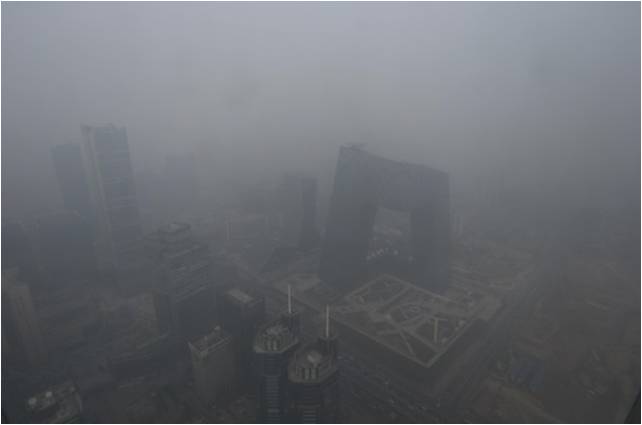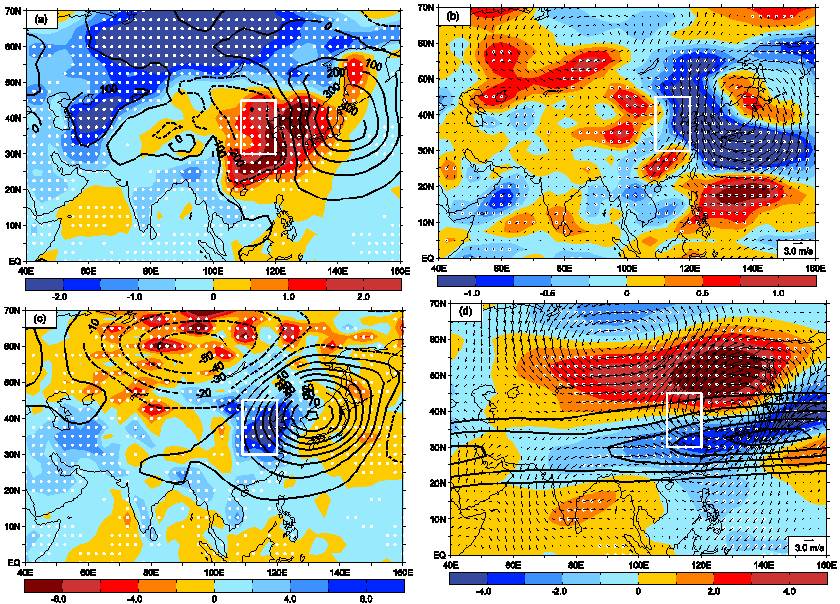Haze in North China and the Associated Atmospheric Circulations
Date:2015-06-18
Eastern China was frequently hit by heavy haze events in recent years and it has resulted in increased severe environmental and climate problems as well as great economic losses and threats to human health. The number of pediatric patients with pneumonia was reported to have increased dramatically in China in recent years because of increased aerosol concentrations.
The human activities are the main causes of the increased haze days in China, for example, the rapid urbanization, increased vehicles, coal and fossil fuel combustion and so on. In addition to the effects of human activities, the increased number of haze days may be also associated with the climate changes that have not been well discussed. Scientific investigations of the impacts of climate changes on the haze can provide a better understanding of haze formation and improve the ability for haze prediction.

Increased severe have events have shown great influences on human daily life and health (From Netease news)
A recent study by Dr. CHEN Huopo and Prof. WANG Huijun from NZC/IAP/CAS has explored the spatial-temporal characteristics of haze events in North China and their associated atmospheric circulations from climatic perspectives using the daily observed data. Results indicate that the haze events in North China primarily occur in boreal winter of year (about 33%) and mainly in the morning of day (45%). The long-term analyses show that the haze days in North China present a significant increasing trend as well as an obvious inter-decadal change. This increasing trend is much more obvious in urban region than that in rural region because of high aerosol emissions in large cities.

Temporal evolutions of the severe haze events in North China from 1960 to 2011 for the seasons. (Figure plotted by IAP)

Composite anomalous distributions of (a) sea level pressure (contour; units: Pa) and near-surface air temperature (shading; units: °C); (b) wind vectors (quiver; units: m/s) and wind velocity (shading; units: m/s) in 850 hPa; (c) near-surface relative humidity (shading; units: %) and 500 hPa geopotential height (contour; units: m); and (d) wind vectors (quiver; units: m/s), zonal wind (shading; units: m/s), and western jet stream (contour) in 200 hPa when the severe haze events occurred in boreal winter in North China in the past five decades. (Figure plotted by IAP)
The further analyses indicate that the occurrences of severe haze events in boreal winter generally correlate with the weakened northerly winds and the development of inversion anomalies in the lower troposphere, the weakened East Asian trough in the mid-troposphere, and the northward East Asian jet in the high troposphere. All of these factors provide a favorable atmospheric background for the maintenance and development of haze events in this region. The inter-decadal changes of haze events in recent decades are also closely associated with the corresponding changes of the atmospheric circulations.
This finding has been online published in Journal of Geophysical Research-Atmosphere.
Citation:
Chen, H. P., and H. J. Wang, 2015: Haze days in North China and the associated atmospheric circulations based on daily visibility data from 1960 to 2012. J. Geophys. Res. Atmos., DOI:10.1002/2015JD023225.
Contact: Dr. CHEN Huopo, chenhuopo@mail.iap.ac.cn
